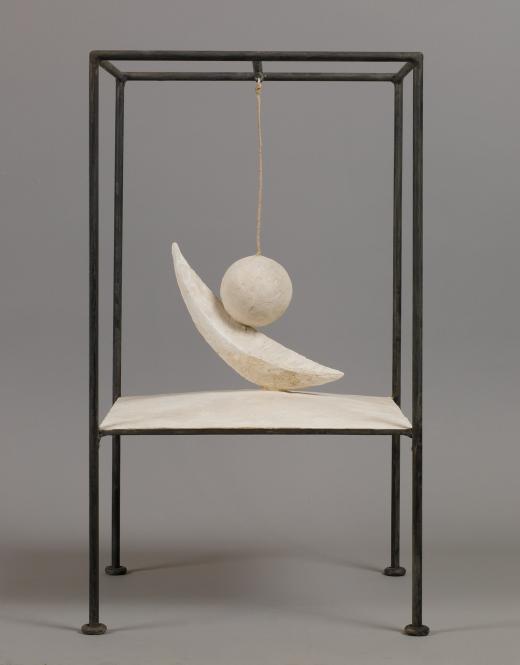SURREALISM
GALLERY 206
Surrealism, an artistic and literary movement that emerged in 1924 and remained active until the end of World War II, had its epicenter in Paris. Among its premises was the eradication of modern rationalism through the power of the imagination. Influenced by psychoanalysis and myth, the Surrealists believed an exploration of the unconscious can reveal complex interior worlds centered on sexuality, desire, and violence. Giacometti embraced the investigation of the language of dreams that was propounded by the Surrealists, and became an official member of André Breton’s group in 1931. The Surrealist influence soon took shape in dreamlike creations and strange images representing interior worlds.
Giacometti’s intensely personal style drew the interest of prestigious artists and intellectuals. Dalí considered Suspended Ball (1930–31) to be the prototype of the Surrealist “object functioning symbolically” with a violent or erotic content. Disagreeable Object (1931), the most emblematic sculpture within this tendency, fits perfectly with the fantasies of brutality that recur in the writings of Georges Bataille.
Woman with her Throat Cut (1932) clearly shows Giacometti’s affiliation to Surrealism in the early thirties. The artist was interested in the movement’s strategies for entering the subconscious, introducing complex themes like the antagonistic states of pain and ecstasy, the human and the non-human, and motifs that generate attraction and repulsion at the same time, such as insect forms.

